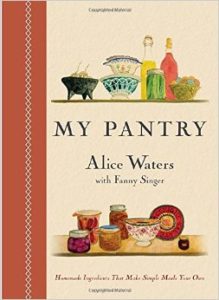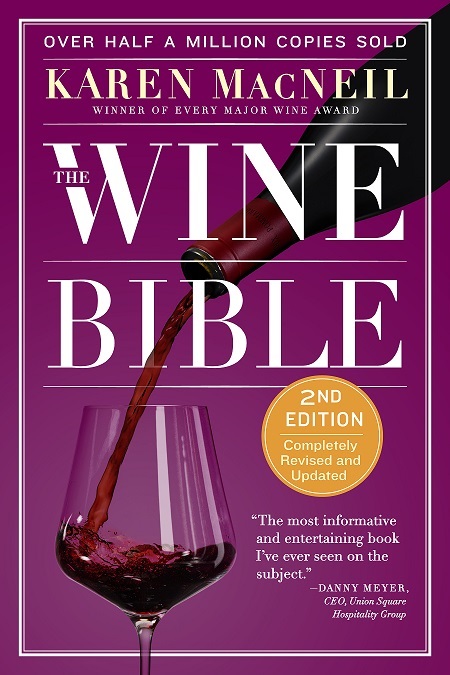 NEAR & FAR: RECIPES INSPIRED BY HOME AND TRAVEL
NEAR & FAR: RECIPES INSPIRED BY HOME AND TRAVEL
by Heidi Swanson
10 Speed Press – 330 pp.
Discovery, the essence of travel, runs rampant throughout this cookbook. Just reading the ingredients for each recipe causes one to inhale reflexively as if one could smell the exotic spices. As Swanson says in the introduction she’s inspired by “Food rooted in place—both near and far… Where I live (northern California), and where I’ve travelled. This is a cookbook that attempts to explore both.”
At the beginning of each destination is a guide to staples used in Swanson’s pantry for that particular location. A bonus is the tale she tells before each place. Her descriptive powers are so evocative it makes one long to read more stories about her travels. Of Japan, Swanson writes: “It’s the cloudlike tofu, tangles of sobo noodles, precision bento boxes, and feather light tempura that make the lasting impression. The frozen breath of monks chanting in the low light before dawn, and the scent of cedar and of tatami mats, and of temple incense.” Lines like these make this writer want to say “Forget about the recipes, just tell me a story.”
But you won’t want to forget about the recipes, they are so good. Whether Saffron Tagine from Morocco; Carrot and Sake Salad from Japan; Brown Butter Tortelli from Italy; the dessert Sabayon from France; Rasam (soup) from India or Fennel Stew from her home in San Francisco, they are all worth trying, or should I say discovering.
WHO FOR: Those who love to travel and derive pleasure from discovering the local food and culture.
![]()
 THE NOMAD COOKBOOK
THE NOMAD COOKBOOK
by Daniel Humm and Will Guidara
10 Speed Press. 552 pp.
This is it. The ultimate cookbook. First: It’s big. Its cover is black with gold lettering, the quality of the paper edged in bottle green says important, and the matte photographs have an understated elegance. Slipped into a flap on the inside cover there’s a sketch of the area around Madison Square, where situated nearby is the NoMad Hotel, and inserted into the back, like a secret compartment, is a small black book by Bar Director Leo Robitschek containing cocktail recipes, not to mention the fabulous restaurant recipes too which all make this a cookbook to sing and dance about.
Long term partners and owners of restaurants like Eleven Madison Park, Daniel Humm and Will Guidera came up with a vision for a special hotel, “a place where people could come to stay in a beautiful room, to have an amazing meal, to have drinks, to socialize, to rest, to party . . . a hotel that could define a neighborhood.” All that came to fruition when they opened the NoMad Hotel on 28th Street and Broadway on April 2, 2012.
THE NOMAD COOKBOOK is divided into the same sections as the menu: Snacks, Appetizers, Mains and Desserts. Needless to say, some of the recipes are both exquisite and creative and it’s unlikely you will have ingredients to hand such as black truffles, foie gras or sea urchin. But there are more home cook friendly recipes too for meat, poultry and fish such as Beef Roasted with Tomato and Artichokes, Chicken Whole Roasted with Lentils and Brussels Sprouts, and Scallops Seared with Grapes and Parsnips. And, of course, there are delectable desserts such as Peach Roasted with Rosemary and Vanilla.
Following these sections is the important “Basics,” the building blocks of NoMad’s food used in many recipes that includes dressings, pickles, stocks, butters etc. I could go on and on…Suffice to say this isn’t just a cookbook but a work of art.
I think I’ll kick back now and have one of Nomad’s cocktails. “Mother’s Little Helper” sounds just the thing: Genever; Pale Cream Sherry, Chambery Dry Vermouth, Triple Sec and Elderflower Liqueur. Cheers!
Get out the bugles, THE NOMAD COOKBOOK is a stellar event worthy of fanfare.
WHO FOR: Your favorite gourmet. A professional chef.
![]()
 MY PANTRY: HOMEMADE INGREDIENTS THAT MAKE SIMPLE MEALS YOUR OWN
MY PANTRY: HOMEMADE INGREDIENTS THAT MAKE SIMPLE MEALS YOUR OWN
by Alice Waters with Fanny Singer
Pam Krausse Books. 145 pp.
Do you recall a television commercial years ago that said words to the effect: We don’t make the things you like; we make the things you like better. Well, this latest book by Alice Waters is similar. It isn’t a typical cookbook; rather, a book that features foods that can enhance a meal or accompany one.
Waters shows us how to make spice mixtures, condiments, sauces, stocks, pickling and preserves etc. that will infuse dishes with added flavor. She even shows us how make cheese. Waters also describes how to shop for and stock your own pantry with these home made foods so you can enhance your recipes throughout the year, which is not only economical but lends itself to impromptu, creative meals. Depending on the type of cook you are, this slim volume could become an essential part of your repertoire.
Waters has legions of fans. No wonder when she has been at the forefront of the slow food movement and initiated the Edible Schoolyard program in the US as well has being the chef/owner of Chez Panisse in Berkeley, California since 1971. Chez Panisse is known for its outstanding cuisine and many of its chefs over the years have become famous under Waters’ tutelage. My Pantry is Waters’ sixth book. The delightful pen and ink illustrations are by Fanny Singer, Waters’ daughter.
WHO FOR Aficionados of sustainable cuisine. Would make an ideal hostess gift.
![]()
And finally…
 THE WINE BIBLE 2ND EDITION
THE WINE BIBLE 2ND EDITION
by Karen MacNeill
Workman Publishing Company. 1008 pp.
Don’t let the number of pages in this hefty paperback put you off; Karen MacNeil’s updated version of The Wine Bible is a pleasure to read. The first edition, published in 2001, took her ten years to write. For this updated version she’s revised a whopping 80% of the book.
Students typically choose between MacNeil’s The Wine Bible and The Oxford Companion to Wine, edited by Jancis Robinson, of which coincidentally there’s a new updated fourth edition. Some critics favor Robinson’s version, claiming it has the edge in terms of world coverage of wines. Both are excellent, but I prefer MacNeil’s tome, which reads less like an enclopedia even though in essence it is.
For instance, under the heading of Barolo and Barbaresco MacNeil writes: “Close your eyes and imagine it is evening in the cold, dark, hard foothill of the Alps. A fire smolders in the hearth of a stone farmhouse; game is being roasted in the old oven. Wine in this setting becomes more than wine. It is reassurance; it is solace.”
Open almost any page and you’ll find a story-like, conversational way of imparting what can often be dry, factual information. A few critics dislike MacNeil’s writing style as if it somehow diminishes her vast knowledge. Personally, I like it as the more I can learn about wine the better. In fact, I feel that same sense of wonder that the character Maya did in the movie Sideways: how wine is a living thing, always evolving so that it tastes different from one day to the next, wondering what the weather conditions were the day the grapes were picked, about the land etc. If you appreciate this kind of sensory detail, The Wine Bible is for you.
MacNeill has earned many wine accolades and titles, as well as being the host of the PBS show Wine, Food, and Friends with Karen MacNeil. Visit her website www.karenmacneil.com to sign up for her Friday tip sheet called WineSpeed.
WHO FOR: Wine lovers who are interested in learning more about wine.
